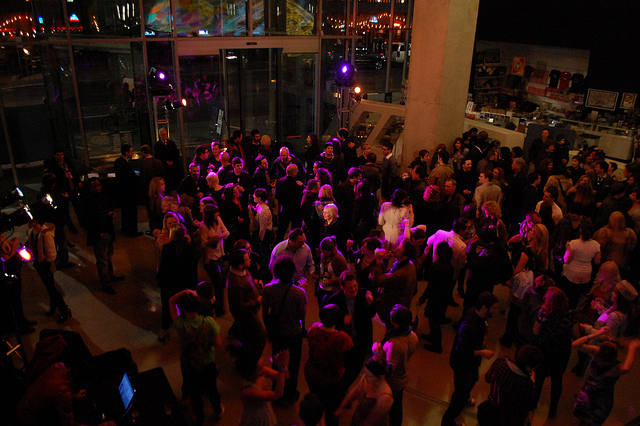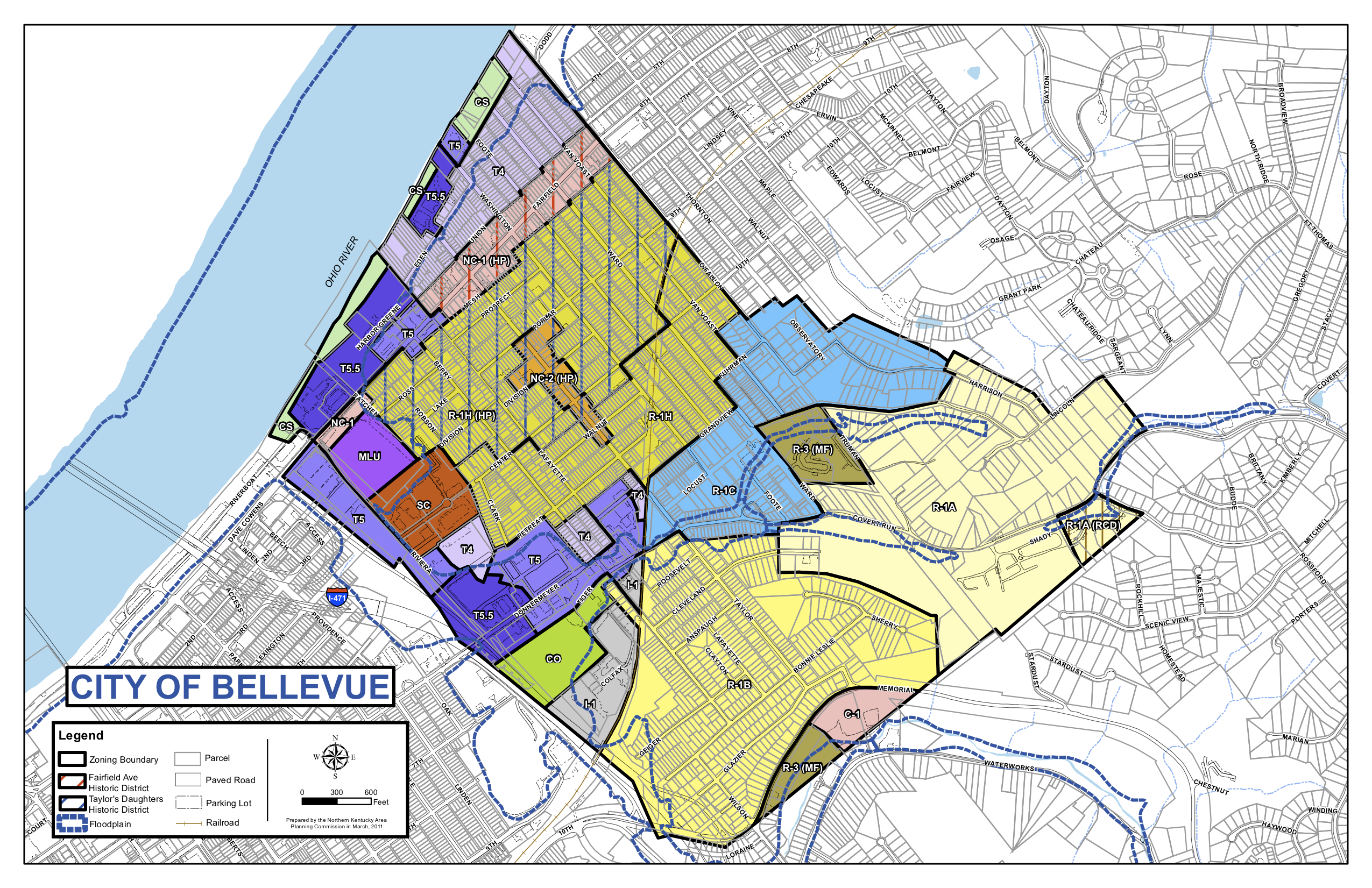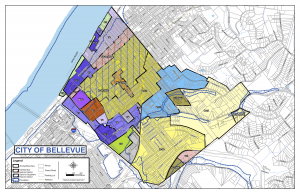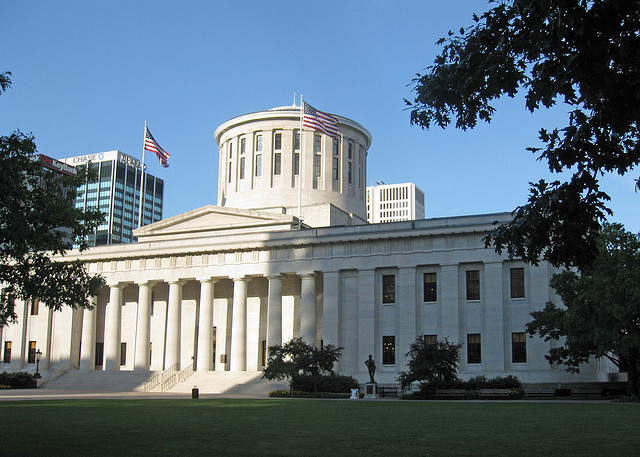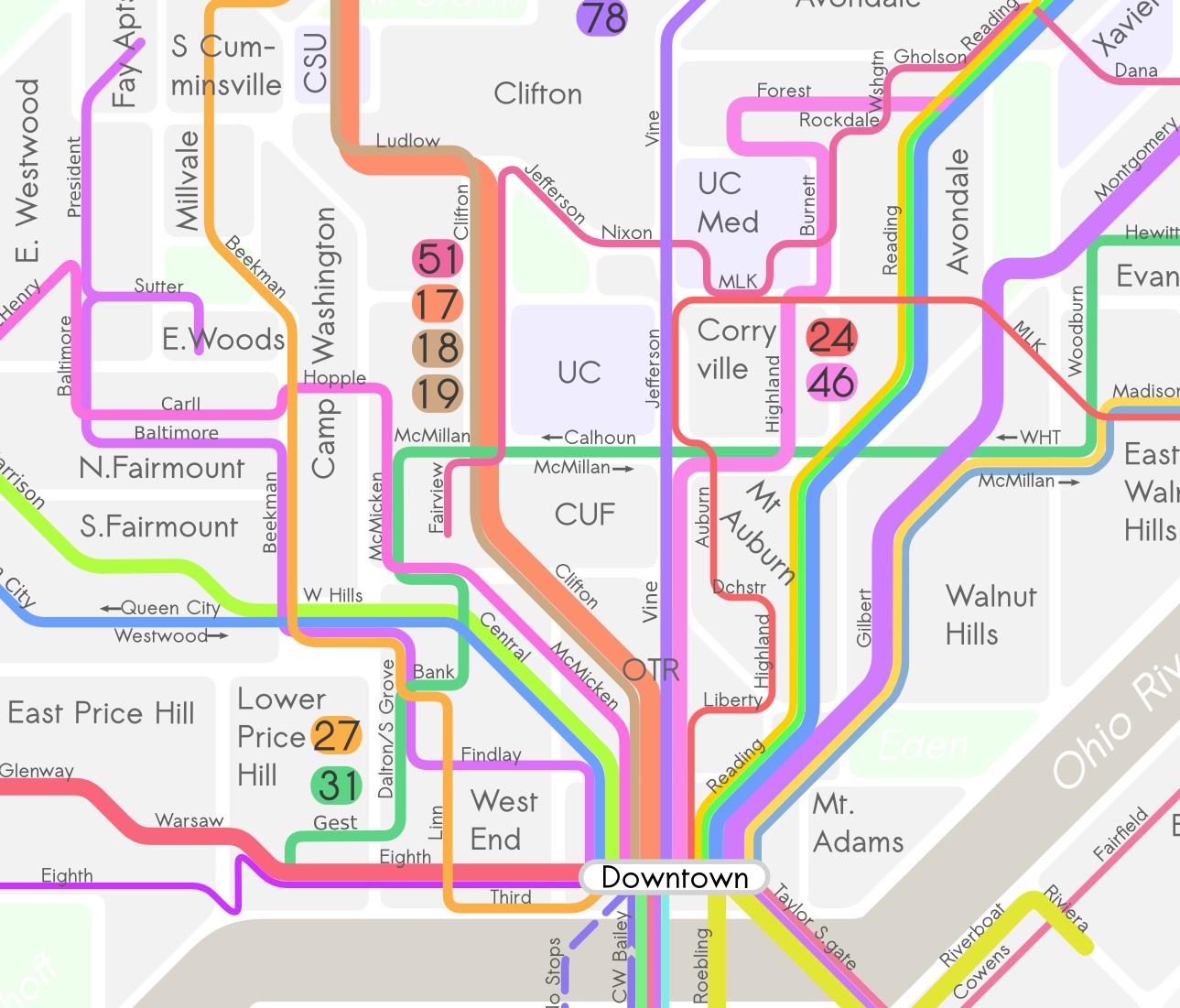 Ohio’s Transportation Review Advisory Council (TRAC) met today in Columbus and was greeted by 32 Cincinnati Streetcar supporters, ranging from families to young professionals, small business owners, CEOs and VPs of corporations, and city staff. The council and Ohio Department of Transportation staff members, according to UrbanCincy writer Jenny Kessler who was one of those in attendance, appeared surprised at the turnout.
Ohio’s Transportation Review Advisory Council (TRAC) met today in Columbus and was greeted by 32 Cincinnati Streetcar supporters, ranging from families to young professionals, small business owners, CEOs and VPs of corporations, and city staff. The council and Ohio Department of Transportation staff members, according to UrbanCincy writer Jenny Kessler who was one of those in attendance, appeared surprised at the turnout.
The TRAC held a working meeting at 10 am with the ODOT staff (as the director of ODOT, Jerry Wright is the chairman of the TRAC) to hear the staff’s drafted recommendations for which projects to cut and keep in the 2011-2015 Major Project List . The result was a recommendation of $98 million in cuts. UrbanCincy research reveals that the way in which those cuts were administered in particularly shocking.
- 52% of all cuts came from the state’s highest-rated project – The Cincinnati Streetcar – which is positioned to now lose 100% of all funds originally recommended for the project.
- The Cincinnati region got hit the hardest in Ohio. 82% of all cuts recommended by the TRAC are from the Cincinnati region and account for roughly $80 million.
- $1 million was taken from upgrades to the Queensgate rail yard that would have relieved freight rail traffic.
- Two highway projects, from Governor John Kasich‘s (R) district, totalling $7.7 million were added to the TRAC’s listed of recommended funding.
- Non-highway investments now only make up 26% of the TRAC’s recommended transportation projects in terms of overall funding ($18.2M) and number of projects (4).
Kessler reported that Kasich’s staff advised the TRAC to reallocate $15 million from the Cincinnati Streetcar to a bus corridor project in Canton, and $35 million from the Cincinnati Streetcar to the $3 billion Brent Spence Bridge project. What many transportation experts now seemed to be concerned about is the process in which the TRAC is being advised to cut.
“There is no legitimate reason why the TRAC should cut from the top rather than the bottom,” said All Aboard Ohio executive director Ken Prendergast. “If the TRAC ignores its own scoring process, then I’m not sure why Director Wray urged the TRAC’s creation in 1997 as a useful way to limit political influence on selecting transportation projects for funding.”
Evidently several TRAC members feel the same way. As the meeting progressed, William Brennan verbally expressed concern over the state’s top-rated project shouldering the load.
“The number one rated project is recommended to take the brunt of the cuts…that’s a problem for me,” said the Toledo native. As Brennan made the statement, several other members nodded in agreement including Antoinette Maddox, Raymond DiRossi and Patrick Darrow.
Antoinette Maddox (D), the council’s only woman and African American member, spoke several times and expressed her concern for the extreme cuts made to the streetcar project.
Maddox suggested other options, such as sunsetting all new projects or making cuts to the lower ranked Tier-2 projects. These were shot down by the ODOT staff members.
It was evident to those in attendance that the real detractors to the streetcar project were not the TRAC members who had been working together in 2010, but the newly appointed “asphalt sheriff” Jerry Wray and his staff members, Jennifer Townley and Ed Kagel. Townley, who did most of the speaking during the meeting, cited the reasons for reallocating the streetcar funding to lower ranking projects “due to fiscal balancing.”
What Townley and her colleagues failed to mention was that the TRAC funding in question is federal money being reallocated through state governments. Pulling the money for the streetcar does not help to solve the budget crisis Governor Kasich is facing, it simply moves it around to much less worthy projects. The other members of the TRAC noticed this right away and voiced their concern.
When pressed for more reasons behind cutting streetcar funding for Cincinnati, Townley later replied, “because there is already a bus system in place in Cincinnati that services the same area, we don’t see why rail is really necessary.” If you would like to inform Ms. Townley as to why Cincinnati needs rail as well as a bus system, please drop her an email at Jennifer.Townley@dot.state.oh.us.
The numerous streetcar supporters in attendance were able to submit written statements, but as it was a working session where the TRAC did not make a vote, only listened to recommendations, no citizens were permitted to speak.
The council is scheduled to hold a private conference call that may or may not be legal on Friday, March 25 to discuss the recommendations further before they develop a final list on April 10 and hold a final vote and public hearing on Tuesday, April 12 in Columbus.
The underlying question still exists – if greater emphasis is going to be placed on political patronage and gubernatorial intimidation, then why does the TRAC even exist?
Operations Manager Jenny Kessler contributed to this article.
